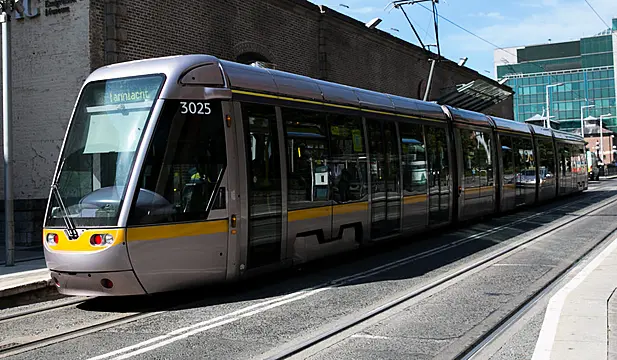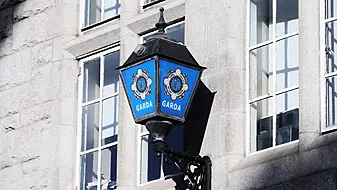A Luas tram travelled along the route of the Red Line in Dublin with a live high voltage cable protruding from under a carriage last year, an investigation by railway safety inspectors has revealed.
A report by the Railway Accident Investigation Unit (RAIU) has detailed how the Luas departed the stop at Connolly on October 25th, 2022 with a severed cable and travelled across the city to the Red Cow stop.
The report said the driver of a tram travelling in the opposite direction noted what he thought was a hose protruding from the underframe of the other Luas as it was leaving the stop at Connolly at around 8.08am.
A traffic supervisor alerted to the issue contacted the driver of the affected tram and instructed him to continue with a normal service to the stop at Red Cow where it would be removed from service and examined at a maintenance depot.
The RAIU said the tram served all stops without incident.
'Potential serious accident'
However, the RAIU said under slightly different circumstances, the incident may have led “to a serious accident with the potential for a fatality or serious injuries due to the exposure of a live high voltage cable protruding from the underframe of a tram in service.”
The report found that two cables underneath the tram had severed while another component had also shown signs of extreme overheating.
It also established that both cables had been detached 20 days earlier as part of routine maintenance on the wheels of the tram.
The RAIU, which engaged the assistance of a metallurgical specialist, said the cables should have been checked for corrosion and reported to a team leader if found, while they should also have been coated with a paste to reduce the risk of corrosion.
It concluded the soiling and oxidation of the cables and the absence of any paste had caused the cables to sever.
The RAIU said it was “probable” that there would have been some corrosion on the surface on the cables during the inspection 20 days earlier as it was unlikely the extent of corrosion could have occurred within that time period.
It said the absence of any paste also made the cables more susceptible to soiling and oxidation.
The RAIU said the lack of guidance documents on identifying defects and assisting maintenance technicians in their requirements to report defects to team leaders may have been a contributory factor.
Inspectors noted that the Luas operator, Transdev, had not immediately notified the RAIU of the incident as required and had removed part of the tram’s components before inspectors could examine them in situ.
The report also observed that Transdev’s guidelines for the safe management of trams contained no reference to equipment protruding from a carriage.
Safety recommendations
The RAIU issued five safety recommendations as result of its investigation including the development of new guidance documentation by Transdev about possible defects including unacceptable levels of corrosion.
Following the incident, Transdev said it had carried out an immediate check on the condition of the same cables across its fleet of trams followed by a more in-depth examination of the equipment which was completed by early December 2022.
The company said maintenance technicians were also reminded of the requirements to report corrosion and to coat cables with paste.

Transdev said drivers who become aware of protruding equipment from a tram were also instructed if not already at a platform to stop at the next stop and await instructions from a supervisor.
It said traffic supervisors were instructed that any tram found in a similar condition in future should be removed from service and returned to a depot.
A separate report on the incident by the Commission for Railway Regulation said Transdev had provided insufficient responses to its request for information.
The CRR said the tram should have been stopped once the “hose” was noticed because of its potential to be a serious defect.
It also concluded that quality controls at the Red Cow Luas depot were insufficient to control the risk of unsecured critical fasteners, while torque markings appeared to have been applied incorrectly to the cables.







